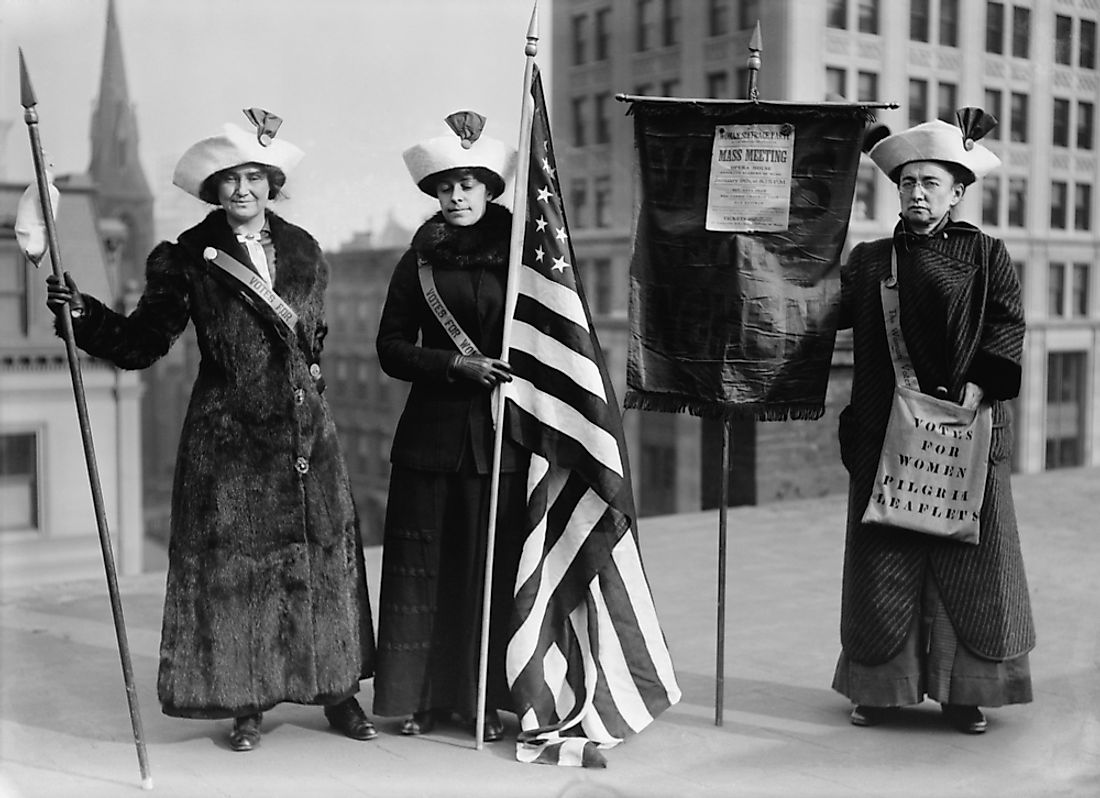When Did Women Get the Right to Vote in the US?

The right to vote for women was a steady movement that lasted for many decades in the search for equal democratic rights. The 19th Amendment to the American Constitution allowed women the voting right—a right known as women's suffrage. The first national convention for women’s votes was held in 1848 in New York, Seneca Falls. This movement to demand the vote became a strong propeller for women’s rights and helped in raising public awareness.
Origins of Women's Suffrage
The nationwide movement for advocating for women’s voting rights was formed in 1869, mainly by middle-class women who used peaceful means to drive for their rights. Women were not allowed some of the critical rights enjoyed by their male counterparts. For instance, women couldn't possess property and had no lawful cause to any money they may acquire, and no female had the right to vote. Women were required to concentrate on housework and motherhood, not legislative issues. Different reform groups multiplied across the US, and in some of these women played an integral role. These would form the basis for advocating for voting rights.
As the women's suffrage movement grew stronger, many women began to oppose the traditional idea that the only true woman was a submissive wife and mother preoccupied with the home and family affairs. Instead, they embraced their greater role in society. Arguments for women’s right to vote included that women are equal before God and to their male counterparts, as well as the fact that they paid taxes, participated in local elections, and had already gotten the right to vote in other countries.
However, opponents of the suffrage movement argued that the woman’s place was in the home and not the rough political world. They assumed that politics would change the caring nature of women. The fact that women did not fight in wars was also a prime reason at the time. Other arguments were that women were ignorant of politics and hence would not use their vote correctly.
Getting the Vote
During the first World War, women served the country and did men's work from numerous points of view. When they got the vote in 1918, practically every individual who upheld the movement in the Senate said that they merited it because of their lead amid the war. The issue with this contention is that only householders beyond age 30 got the vote in 1918; women who were more than 21 years old and below 30 did not get to vote until 1928. However, the Representation of the People Act (1918) gave the vote to all men beyond 21 years old, so the war did not necessarily achieve the equal rights for women-only partially giving them the vote.
19th Amendment
On May 21, 1919, a Republican representative, James R. Mann from Illinois and executive of the Suffrage Committee, proposed to the House in favor of the Susan Anthony Amendment allowing women the right to vote. The House overwhelmingly supported the amendment by over two-thirds of the House majority. Congress passed the 19th Amendment on June 4, 1919, by 2 votes over the required two-thirds majority. The amendment was ratified by Illinois, Michigan, and Wisconsin, followed by Kansas, New York, and Ohio. Tennessee tipped the scale in favor of ratifying the vote, as the 36th state to approve the amendment. The amendment was certified on August 26, 1920, by US Secretary of State Bainbridge Colby.







